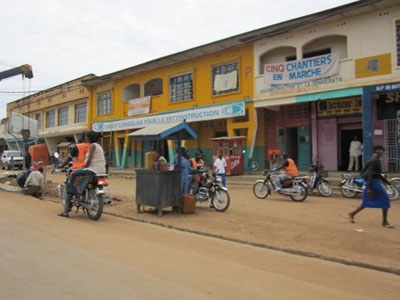
GOMA, North Kivu Province, Congo — North Kivu province is split into two administrative regions. The Petit Nord in the south and the Grand Nord in the north. Most of the violence that you read about in North Kivu happens in the Petit Nord, where the poorly integrated Congolese army, the FDLR, and other militias prey upon civilians. I traveled recently to Grand Nord—to a town called Beni near the Ugandan border—to better understand the security situation there and the threats facing civilians.
Since the formal end of the regional war that ripped through eastern Congo from 1998 to 2002, Beni has been hit by bouts of violence, but has avoided the chronic instability that plagues areas farther south. Although the security situation in Beni is relatively calm, armed groups there do create instability which leads to abuses against civilians. A Ugandan rebel group called ADF-NALU is a particular concern.
ADF-NALU is actually a pair of Ugandan rebel groups that have been in the Grand Nord since the late 1980s: the Allied Democratic Forces and the National Army for the Liberation of Uganda. Although incapable of anything more than sporadic small attacks inside Uganda, the presence of ADF-NALU has served to justify frequent Ugandan military intervention in eastern Congo. As recently as December 2009, between 550 and 600 Ugandan soldiers entered Congolese territory to, according to Uganda, conduct operations against ADF-NALU. However, there was no confrontation between the Ugandan army and the rebels, and many locals suspected a hidden agenda.
The Ugandan Army systematically looted eastern Congo during the war and sponsored some of the nastiest militias in an already brutal war. Unsurprisingly, many locals remain deeply suspicious of Uganda. Meanwhile, the 1000 or so ADF-NALU rebels—half of them Congolese—are more interested in protecting their commercial interests in eastern Congo than anything else. Removing the ADF-NALU would remove a pretext for Ugandan intervention (though, of course, the Lord’s Resistance Army is still present farther north) and increase stability here. The United Nations peacekeeping force in Congo has been supporting talks between the Ugandan government and the rebels, and the United States and others should support that process.
Operation Amani Leo, the Congolese government’s latest military operation against Rwandan FDLR rebels and other militias operating in North and South Kivu, has not affected Beni as much as other areas. However, the FDLR are moving northwards as they are pushed out of their strongholds in Petit Nord. An influx of FDLR and the deployment of more Congolese forces to Beni would be a disaster for the local population. Congolese forces stationed in Beni already commit abuses against civilians, and United Nations peacekeepers there should be working with the Congolese army to reduce abuses and prioritize civilian protection.

